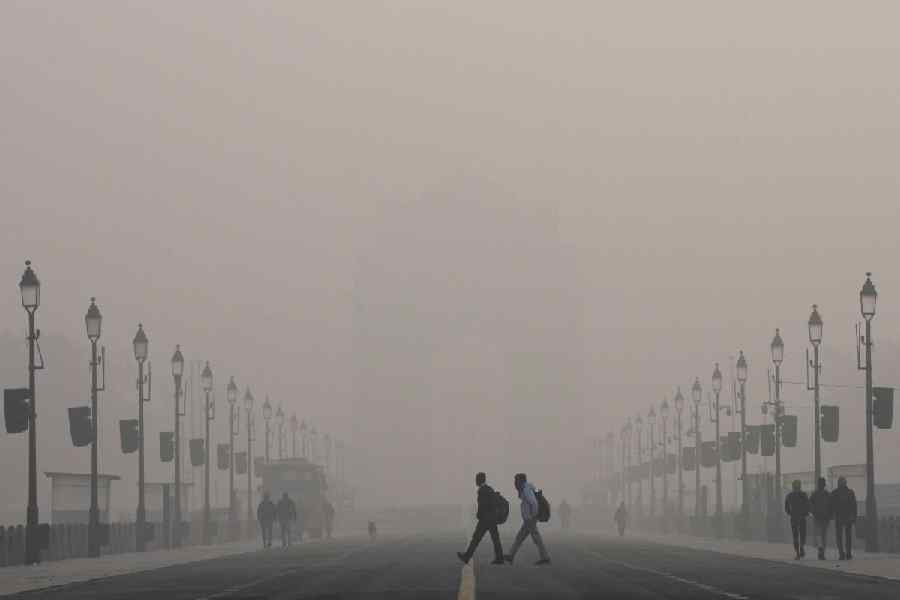Mariel Sander thought she would spend her final month at Columbia University going to parties, taking a modern dance class and road-tripping over spring break to five national parks.
Instead, she carried dead bodies off hospital beds and refrigerated trailers.
The coronavirus has killed more than 20,000 people in New York City, straining hospital morgues and funeral homes like never before.
To manage the onslaught, hospitals brought on more than 100 temporary morgue workers, according to the city's department of health.
Sander was one of them. She had been sitting at home in Oldwick, New Jersey, restless after her Manhattan campus closed and eager to help in the pandemic. She emailed city hospitals until she ended up in the $25-perhour job.
Sander, 21, spoke with The New York Times throughout her month working at a hospital morgue in Brooklyn, providing a rare glimpse inside an operation that is hidden from public view.
She encountered nightmarish moments -- ripped body bags, amputated limbs, mysterious liquids pooled on bedsheets.
But she said she also developed a newfound respect for the rituals of death. The morgue team taught her to treat each body with care, a way to respect the family members who could not be inside the hospital to say goodbye to their loved ones.
The experience depleted her physically and emotionally. When carrying bodies, she sometimes glanced at their birth years, written on the body bags, to see how close in age they were to her parents.
'This experience taught me more about empathy than anything else,' she said.
Sander, who was not authorised to speak with the media about her job, shared her experiences on the condition that the hospital's name not be published. Many details were corroborated by another employee who was also not authorised to speak with the media and spoke on condition of anonymity. A spokeswoman for the hospital declined to comment.
April 14: Welcome to the morgue Sander sees the hospital morgue for the first time.
The room, tucked away in the basement, can normally fit about a dozen bodies. Today, almost 90 bodies need storage. Two refrigerated trailers are parked outside the hospital as temporary morgues.
She learns how to put on a protective N95 mask, then a surgical mask and face shield. She also puts on a hairnet, scrubs, two layers of gloves and two lab coats.
Inside the morgue, she feels overwhelmed and lost. Amputated limbs, placentas and other specimens are stored there for research. She sees bags containing the bodies of infants.
The morgue phone rings. It is time to transport her first body.
Nurses place the body into a white bag. Morgue workers check the body's wristband and write the patient's name on the outside the bag, a way to help funeral directors pick up the correct body.
Sander has been trained as an emergency medical technician -- she took the course while considering whether to become a doctor -- so she knows to maneuver bodies that are much bigger than she is by lifting from her legs, not her back.
She grabs a body bag the wrong way, and it tears. She learns to roll the thin fabric into a bunch and grip it with her fist.
Stretchers are now being used to carry two bodies side by side. A morgue technician quickly hoists a body onto a stretcher, but the bag crashes to the ground, spilling liquid onto the floor.
Sander watches in horror, worried about exposure to the virus.
A supervisor reprimands him, 'You don't do that to bodies.' Sander is relieved to learn this is not the norm.
After work, Sander hears the 7pm cheer for health workers near the apartment where she is staying in Manhattan's East Village. Her eyes well up with tears. April 16: `I'm so scared' Sander stands alone in one of the morgue trailers. It is pitch black, illuminated only by the hand-held lamp she carries.
Suddenly, she sees a man's face inside an open body bag. Her heart drops. She talks out loud to calm down, feeling swallowed by the dozens of bodies on wooden shelves around her.
During one pick-up, Sander arrives in the hospital room with another morgue technician to see an older patient sitting up in bed, visibly relieved to see them. He is next to a bed with the curtains fully drawn around the dead body.
'This is the second person who was in that bed since I've been here,' he says. 'I'm so scared.' Her heart breaks. She wants to comfort him, but does not know how. They chat briefly, and she wishes him a speedy recovery. The encounter is startling because the roommates of dead patients are normally unconscious.
Morgue workers usually enter a room to hear only the inhale and exhale of ventilators, punctuated by beeping from monitors.
Sander goes to pick up a body and comes face to face with the patient's son, who is a hospital employee. He helps the morgue technicians move his father's body to a stretcher. She is surprised at how steady his hands are.
Seeing the son is a jolt of reality: Each body she carries belongs to somebody. She has tried to block out the mournful parts of her job, focusing on logistics like how to fit a stretcher into a narrow doorway.
She feels a fresh wave of apprehension each time the morgue phone rings. Her least favourite part of the job is entering a hospital room to find a chaotic scene of tangled monitor wires, uneaten food and used nurses' gowns. It is a snapshot of the patient's final moments.
April 23: The job takes a toll Sander has not been sleeping well. She thinks about the silhouette of a stomach under the body bag, the jiggling of skin on a dead body.
Her lower back aches. Lifting a body from the lowest shelf in the trailer is gruelling. When she pushes a stretcher through winding hallways and on steep ramps, she often bumps into the wall, causing a twinge in her back. She carries a thin woman whose body is still warm. The feeling reminds her of hugging her grandmother, who died earlier this year.
It is now common for bodies to sit at the morgue for three to four weeks, compared with an average of two to three days before the pandemic. Funeral homes are so backed up that they are turning families away who need burial services.
In addition to refrigeration, the hospital tries to slow decomposition by placing balled bedsheets underneath the bodies' heads.
Keeping the head elevated prevents redness in the face, making it more recognisable to families.
Sander, a neuroscience and English major, now feels sure that she wants to go to medical school and better understand how the human body works.
April 28: Six bodies by noon The improvements come in fits and starts. Some days, there is not a single death on her shift. Other days, she picks up six bodies by noon.
A supervisor complains about a funeral director who showed up the day before with four bodies in the back of a U-Haul, wanting to place a body from the hospital on top. Her colleagues refused, saying the stacking could cause the bodies to leak, which would disrespect the families of patients at the bottom.
May 1: Yellow flowers Before the pandemic, about 40 to 50 people died in a typical month at this hospital. The death toll was more than seven times that in April. A relative of Sander's coworker dies at the hospital. The team clears out a space for the body, putting makeup on his face and opening the body bag for his family to see him. They place yellow flow- ers, a sign of hope, over the body.
Sander gets emotional. 'That easily could have been my parents or my sister,' she says.
On calls with friends, Sander has trouble articulating that a good day at work is one in which only two or three people die.
Her priorities before the pandemic -- getting good grades, leading extracurricular activities -- feel detached from her current reality. Her classes, which are now online and graded as pass/fail, end this week.
May 6: Camaraderie in the morgue The mood inside the hospital becomes more upbeat. Sander sees empty beds in the emergency room.
With more downtime, the team plays music in the morgue through an old iPod. They teach one another dances.
She finds an unexpected camaraderie with this crew, which includes employees redeployed from other parts of the hospital. When the hospital ran out of hairnets one day, a co-worker flipped hers inside out to give to Sander.
She calls her mother -- 'just sort of to talk to someone', she says, 'to confirm that yes, this is really happening, that my life hasn't just become a strange dream in which I work in a morgue and the only people I touch are the dead'.
May 8: Celebration A truck from the medical examiner's office picks up 19 bodies to bring to Brooklyn's 39th Street Pier, set up as a centralised pickup location for funeral directors.
New York Times News Service.











